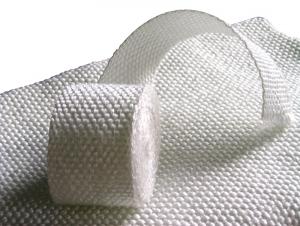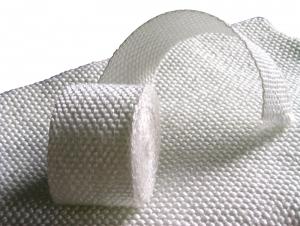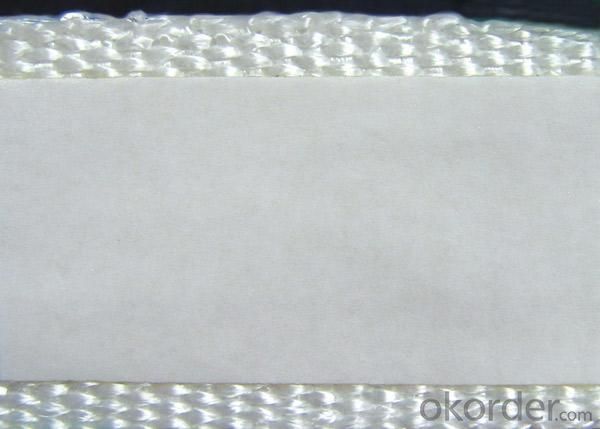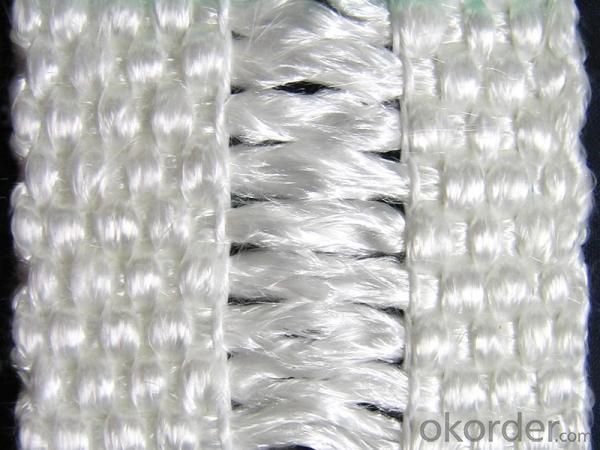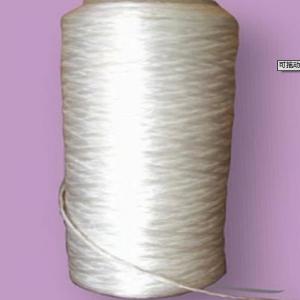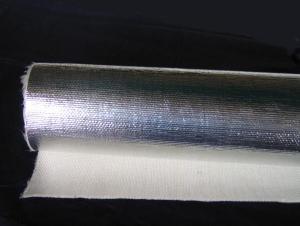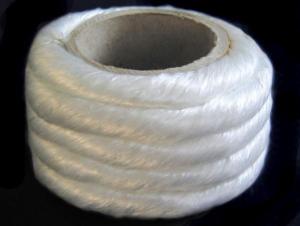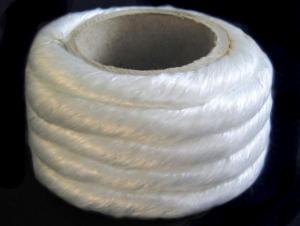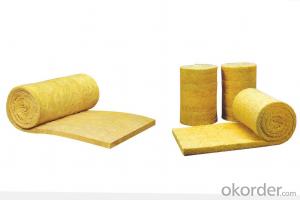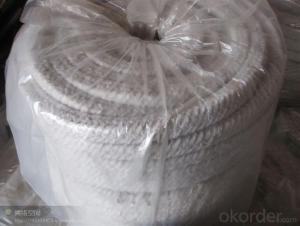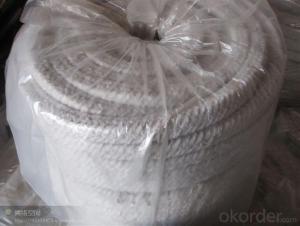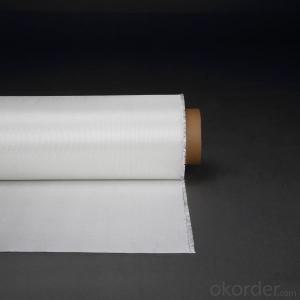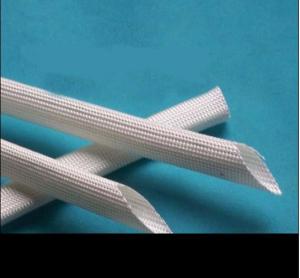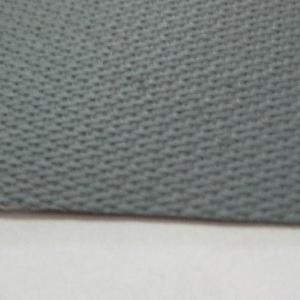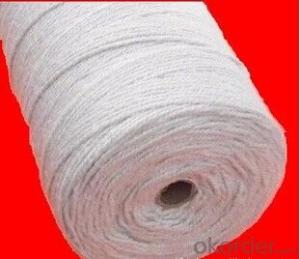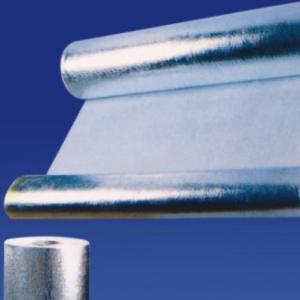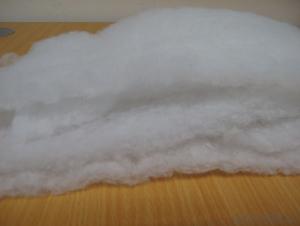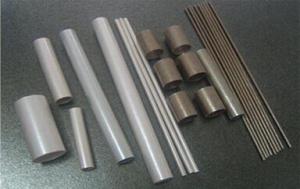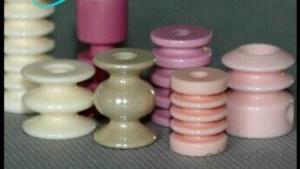Glass Fiber Textiles Textured Fiberglass Adhesive Tape
- Loading Port:
- China Main Port
- Payment Terms:
- TT or L/C
- Min Order Qty:
- 5t kg
- Supply Capability:
- 2*/20FCL Per Month kg/month
OKorder Service Pledge
OKorder Financial Service
You Might Also Like
Basic info of Textured Fiberglass Adhesive Tape It is fabricated from high quality texturized C glass or Eglass fiber yarns that will not burn and will withstand continuous exposure to temperatures of 1022F/550C.
2. It resists most acids and alkalis and is unaffected by most bleaches and solvents.
3. It is an excellent substitute for asbestos tape.
4. Texturized fiberglass tape with copper wire, nickel wire or stainless wire are also available.
Applications of Textured Fiberglass Adhesive Tape:
1. All types of thermal insulation and heat protection provide of industrial wires, cables, hoses, tube and pipe and also provide thermal insulation and personnel protection.
2. Used as a gasket or seal.
Features of Textured Fiberglass Adhesive Tape
Good alkali resistance
High tensile strength and resistance to deformation
Excellent self-adhesiveness
Good smoothness
Convenient application in construction
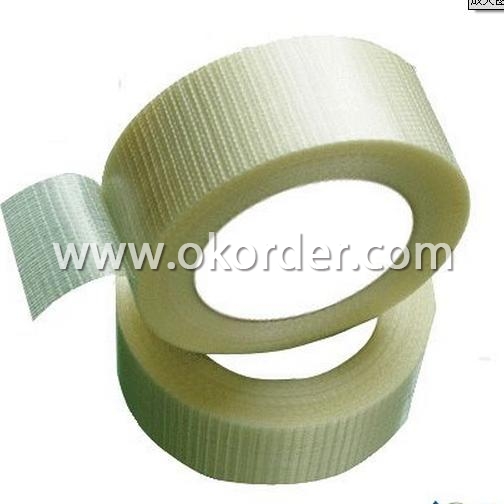
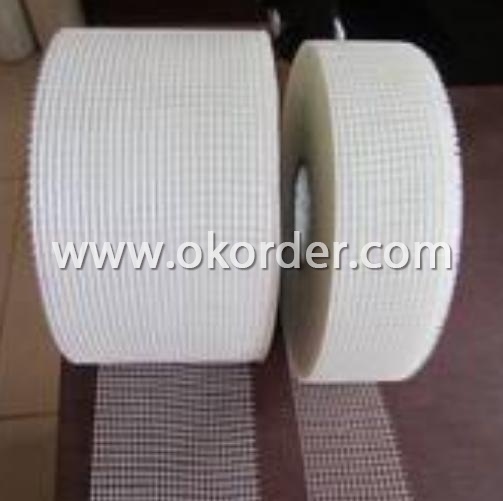
- Q: Are glass fiber textiles suitable for outdoor use?
- Yes, glass fiber textiles are suitable for outdoor use. They are highly durable, resistant to extreme weather conditions, and have excellent resistance to UV radiation, making them a reliable choice for outdoor applications such as awnings, outdoor furniture, and protective covers.
- Q: Are glass fiber textiles suitable for medical and healthcare products?
- Yes, glass fiber textiles are suitable for medical and healthcare products. Glass fiber textiles, also known as fiberglass textiles, possess several beneficial properties that make them ideal for use in this industry. Firstly, glass fiber textiles are highly resistant to chemicals, making them suitable for use in sterile environments such as hospitals and clinics. They can withstand exposure to various cleaning agents, disinfectants, and even harsh medical chemicals without deteriorating or losing their structural integrity. Secondly, glass fibers are non-toxic and do not release any harmful substances, making them safe for use in medical and healthcare products. This is particularly important in applications where patient safety is of utmost importance, such as wound dressings, surgical drapes, and medical implants. Furthermore, glass fiber textiles have excellent thermal insulation properties. They can provide insulation against heat or cold, which is beneficial in medical applications where temperature control is crucial, such as incubators, thermal blankets, or temperature-sensitive packaging. Glass fibers are also known for their high tensile strength and durability. They can withstand repeated use, washing, and sterilization without losing their mechanical properties. This makes them ideal for use in products that require long-term durability, such as bandages, medical gauze, or prosthetic devices. Moreover, glass fiber textiles have a high level of dimensional stability, meaning they maintain their shape and size over time. This property is particularly useful in applications where precise measurements and fit are essential, such as compression garments or orthopedic supports. In conclusion, glass fiber textiles are indeed suitable for medical and healthcare products. Their resistance to chemicals, non-toxic nature, thermal insulation properties, durability, and dimensional stability make them highly valuable in various healthcare applications, ensuring the safety and comfort of patients while maintaining high-quality standards.
- Q: Can glass fiber textiles be used in the manufacturing of electrical devices?
- Yes, glass fiber textiles can be used in the manufacturing of electrical devices. Glass fiber textiles have excellent electrical insulation properties, making them suitable for applications where electrical conductivity needs to be minimized. They can be used as insulating materials in various electrical devices such as cables, circuit boards, transformers, and motors, helping to prevent short circuits and ensuring safe and reliable operation.
- Q: Can glass fiber textiles be used in reinforcement of flax fibers?
- Yes, glass fiber textiles can be used in the reinforcement of flax fibers. This combination of materials is commonly referred to as a hybrid composite. By combining glass fiber textiles with flax fibers, the resulting material can benefit from the strengths and properties of both materials. Flax fibers are known for their high strength-to-weight ratio, natural stiffness, and low environmental impact. They are commonly used in the production of textiles, composites, and various other applications. However, flax fibers have certain limitations, such as low impact resistance and moisture absorption, which can affect their overall performance. On the other hand, glass fibers are widely recognized for their high tensile strength, excellent impact resistance, and resistance to moisture. These properties make them suitable for reinforcing materials and improving their mechanical properties. By incorporating glass fiber textiles into a hybrid composite with flax fibers, the resulting material can possess improved impact resistance, moisture resistance, and overall mechanical strength. The use of glass fiber textiles in the reinforcement of flax fibers can be particularly beneficial in applications that require high strength, durability, and resistance to environmental factors. Furthermore, the combination of these two materials can also contribute to the development of more sustainable and eco-friendly composites, as flax fibers are renewable and have a lower carbon footprint compared to traditional reinforcement materials such as carbon fibers. However, it is important to note that the specific performance of a hybrid composite depends on various factors, including the type and quality of the glass fiber textiles, the processing techniques used, and the desired application requirements. Therefore, thorough testing and optimization are necessary to ensure that the combination of glass fiber textiles and flax fibers achieves the desired mechanical and physical properties for the intended application.
- Q: Can glass fiber textile be used in medical applications?
- Yes, glass fiber textile can be used in certain medical applications. Glass fiber has several properties that make it suitable for use in the medical field. Firstly, it is a strong and durable material, which makes it ideal for applications that require high tensile strength and resistance to wear and tear. Additionally, glass fiber is non-toxic and non-reactive, making it safe for use in medical devices and implants. Glass fiber textiles can be used in medical applications such as wound dressings, surgical gowns, and drapes. They can provide a barrier to prevent the entry of bacteria and other contaminants, thereby reducing the risk of infection during surgical procedures. Glass fiber textiles are also used in the manufacturing of orthopedic casts and splints, as they can provide support and immobilization to injured limbs. Furthermore, glass fiber textiles can be used in the production of medical implants and prosthetics. Their high strength and biocompatibility make them suitable for use in applications such as bone screws, plates, and dental implants. However, it is important to note that glass fiber textiles may not be suitable for all medical applications. In some cases, alternative materials such as synthetic polymers or metals may be more appropriate. Additionally, specific regulations and standards must be adhered to when using glass fiber textiles in medical applications to ensure patient safety and product quality.
- Q: I would like to have a one meter high body sculpture turned into glass fiber reinforced plastic, please ask how thick coated resin, glass fiber cloth should be paved several layers of solid?There is a first mold coating resin coating, or the first in each block die inside coating to be dry and mold, is the first time I turned the glass steel
- The wall thickness of 3mm resin on the line, as long as a layer of glass cloth can be, if you want to use the gel coat resin, resin glass steel production when first brushes in the mold inside the gel with good. Each piece of mold in the resin brush, glass cloth affixed to all the solidification of the scraping edge of the mold. Repair after demoulding.
- Q: Can glass fiber textiles be used in shoes or footwear?
- Glass fiber textiles have the capability to be utilized in shoes or footwear. Renowned for their strength, durability, and flexibility, glass fiber textiles prove to be a fitting material for various purposes, including footwear. They can be employed in the construction of shoe uppers, offering reinforcement and stability, all while maintaining breathability and comfort. By integrating glass fiber textiles into shoes, the overall performance and lifespan of the footwear can be improved, rendering it more resistant to wear and tear. Moreover, glass fiber textiles can also provide insulation and safeguard against heat, thereby making them apt for shoes designed for specific environments or industries. In summary, glass fiber textiles present a versatile and dependable material choice for incorporation into shoes or footwear.
- Q: Are glass fiber textiles suitable for marine applications?
- Indeed, glass fiber textiles are well-suited to marine applications. Known as fiberglass textiles as well, they possess numerous characteristics that render them ideal for usage in marine settings. To begin with, glass fiber textiles exhibit a high resistance to corrosion. This is a vital attribute to consider when selecting materials for marine applications, as they are continually exposed to saltwater. This exposure can cause corrosion and degradation in many other materials. However, glass fiber textiles do not rust or corrode, rendering them highly durable in marine environments. Furthermore, glass fiber textiles boast an exceptional strength-to-weight ratio. In other words, they offer significant strength and structural integrity while remaining lightweight. This quality is particularly important for marine applications, as it allows for the construction of robust and long-lasting structures without adding excessive weight to the vessel or equipment. Additionally, glass fiber textiles possess remarkable dimensional stability. This means that they can maintain their shape and size even when subjected to fluctuating temperatures and humidity levels. This aspect is crucial for marine applications, as vessels and equipment often encounter diverse environmental conditions. Moreover, glass fiber textiles are non-conductive and possess excellent electrical insulation properties. Consequently, they are well-suited for marine applications that require protection of electrical components and wiring from water and moisture. Lastly, glass fiber textiles are relatively easy to mold and shape, allowing for flexibility in design and construction. This versatility makes them suitable for a wide array of marine applications, including boat hulls, decks, insulation, and protective covers. In summary, glass fiber textiles offer a range of advantageous properties that make them highly suitable for marine applications. Their resistance to corrosion, impressive strength-to-weight ratio, dimensional stability, electrical insulation properties, and flexibility in design establish them as a reliable choice for diverse marine structures and equipment.
- Q: Are glass fiber textiles resistant to staining or discoloration from body oils or sweat?
- Yes, glass fiber textiles are generally resistant to staining or discoloration from body oils or sweat. Glass fibers have a non-porous surface, which makes it difficult for oils and sweat to penetrate and therefore reduces the likelihood of staining. Additionally, glass fibers are known for their excellent resistance to chemicals and solvents, including body oils and sweat, which further enhances their stain resistance. However, it is important to note that the specific performance of glass fiber textiles may vary depending on the quality of the material and the manufacturing process.
- Q: Do glass fiber textiles have good insulation properties?
- Yes, glass fiber textiles have good insulation properties. Glass fibers are made from very fine strands of glass, which create a network of tiny air pockets in the material. This network of air pockets helps to trap and slow down the movement of heat and sound, making glass fiber textiles excellent insulators. Additionally, glass fibers have a low thermal conductivity, meaning they do not conduct heat easily, further enhancing their insulation capabilities. These properties make glass fiber textiles commonly used in applications where thermal insulation is required, such as in the construction of buildings, automotive industry, and aerospace industry.
1. Manufacturer Overview
| Location | Beijing, China |
| Year Established | 1992 |
| Annual Output Value | Above US$ 3 Million |
| Main Markets | North America;Southeast Asia ;Western Europe ;Middle East |
| Company Certifications | ISO 9001:2008 |
2. Manufacturer Certificates
| a) Certification Name | |
| Range | |
| Reference | |
| Validity Period |
3. Manufacturer Capability
| a) Trade Capacity | |
| Nearest Port | Tianjing |
| Export Percentage | 60% - 70% |
| No.of Employees in Trade Department | 21-50 People |
| Language Spoken: | English; Chinese |
| b) Factory Information | |
| Factory Size: | Above 10,000 square meters |
| No. of Production Lines | Above 8 |
| Contract Manufacturing | |
| Product Price Range | High; Average |
Send your message to us
Glass Fiber Textiles Textured Fiberglass Adhesive Tape
- Loading Port:
- China Main Port
- Payment Terms:
- TT or L/C
- Min Order Qty:
- 5t kg
- Supply Capability:
- 2*/20FCL Per Month kg/month
OKorder Service Pledge
OKorder Financial Service
Similar products
Hot products
Hot Searches
Related keywords
